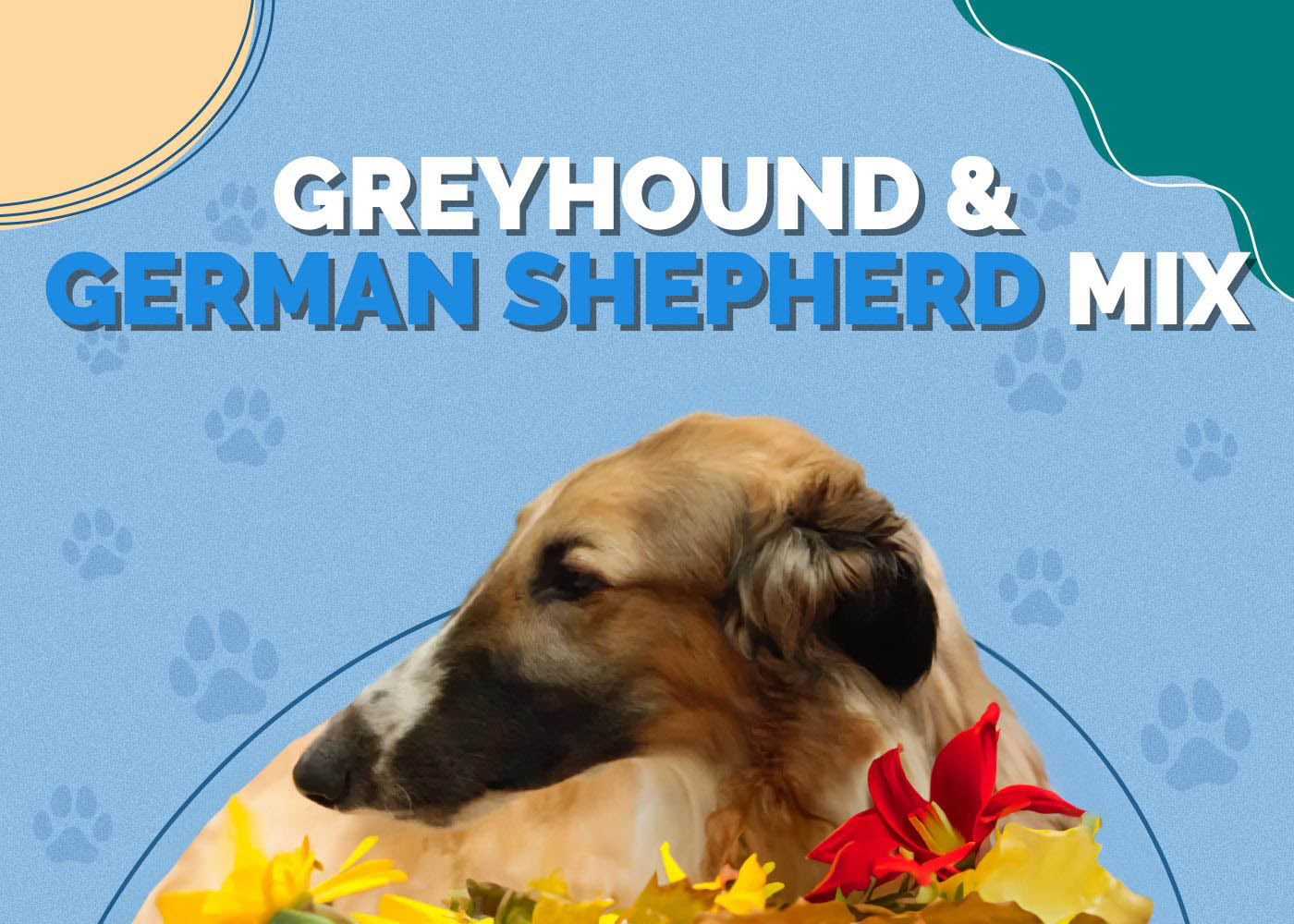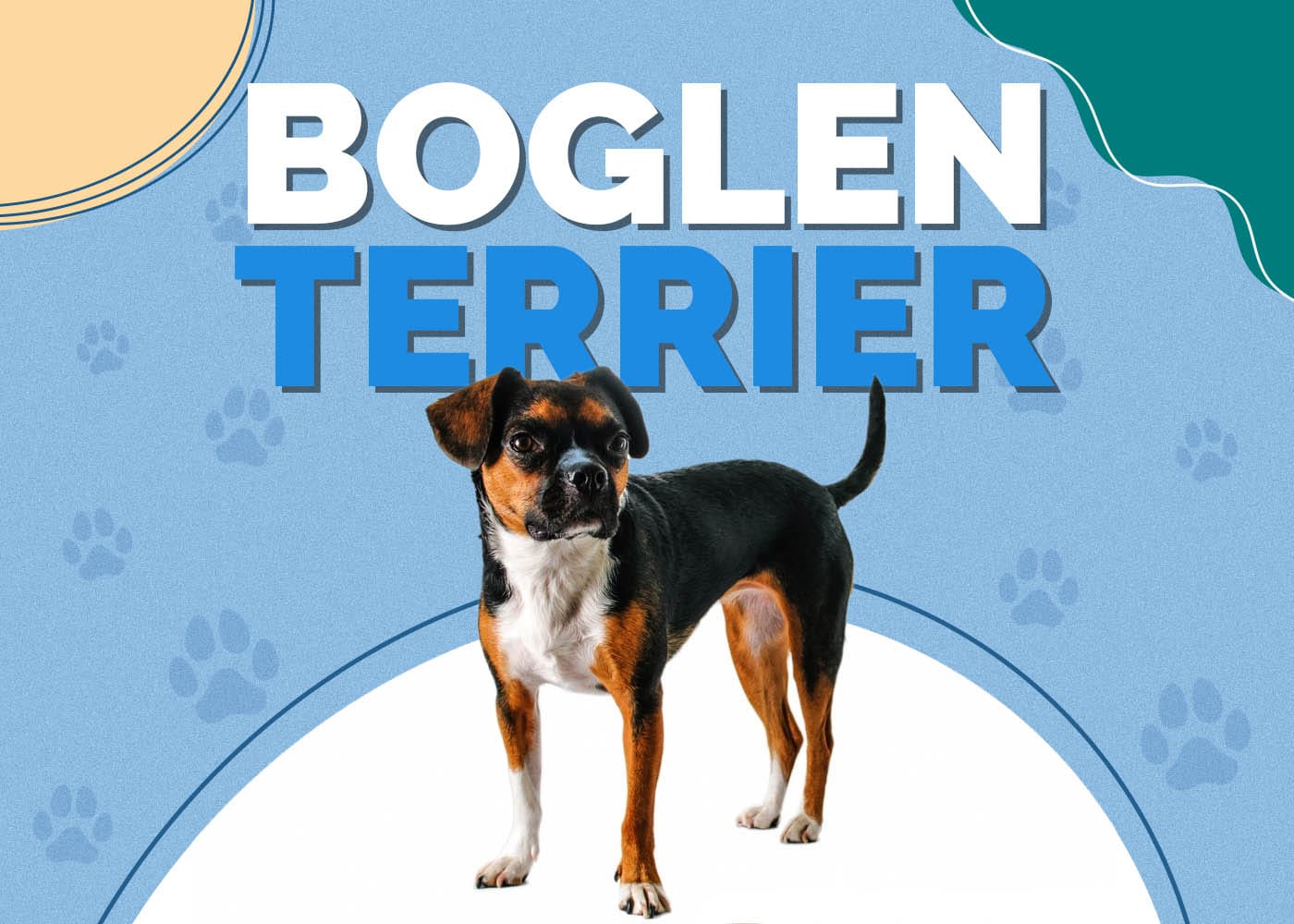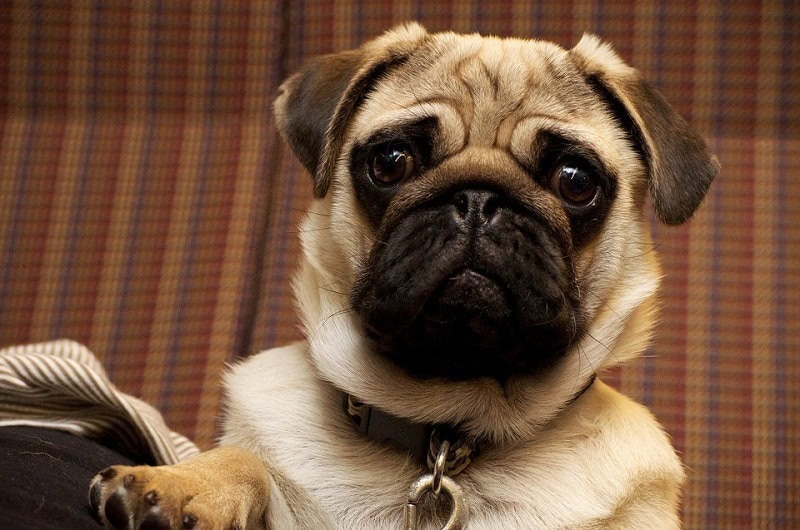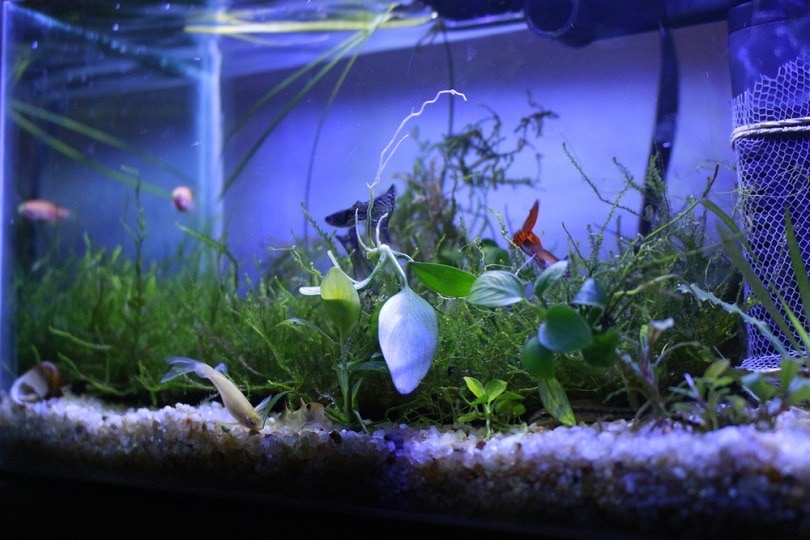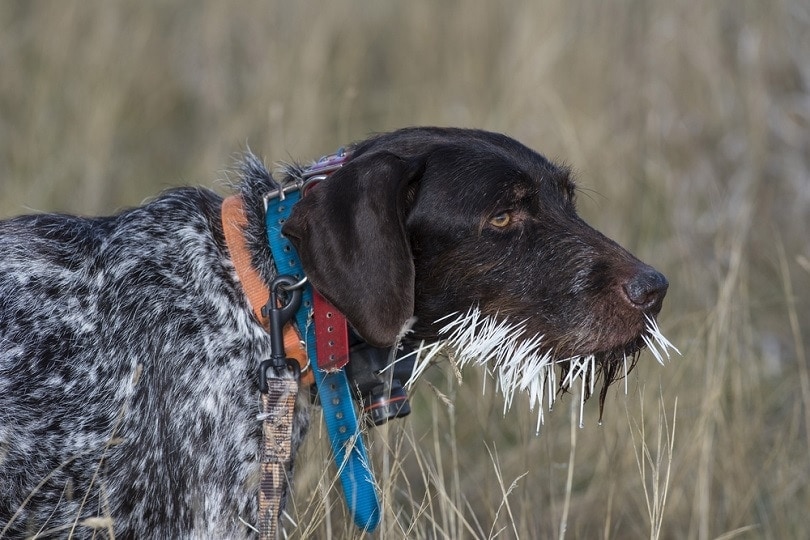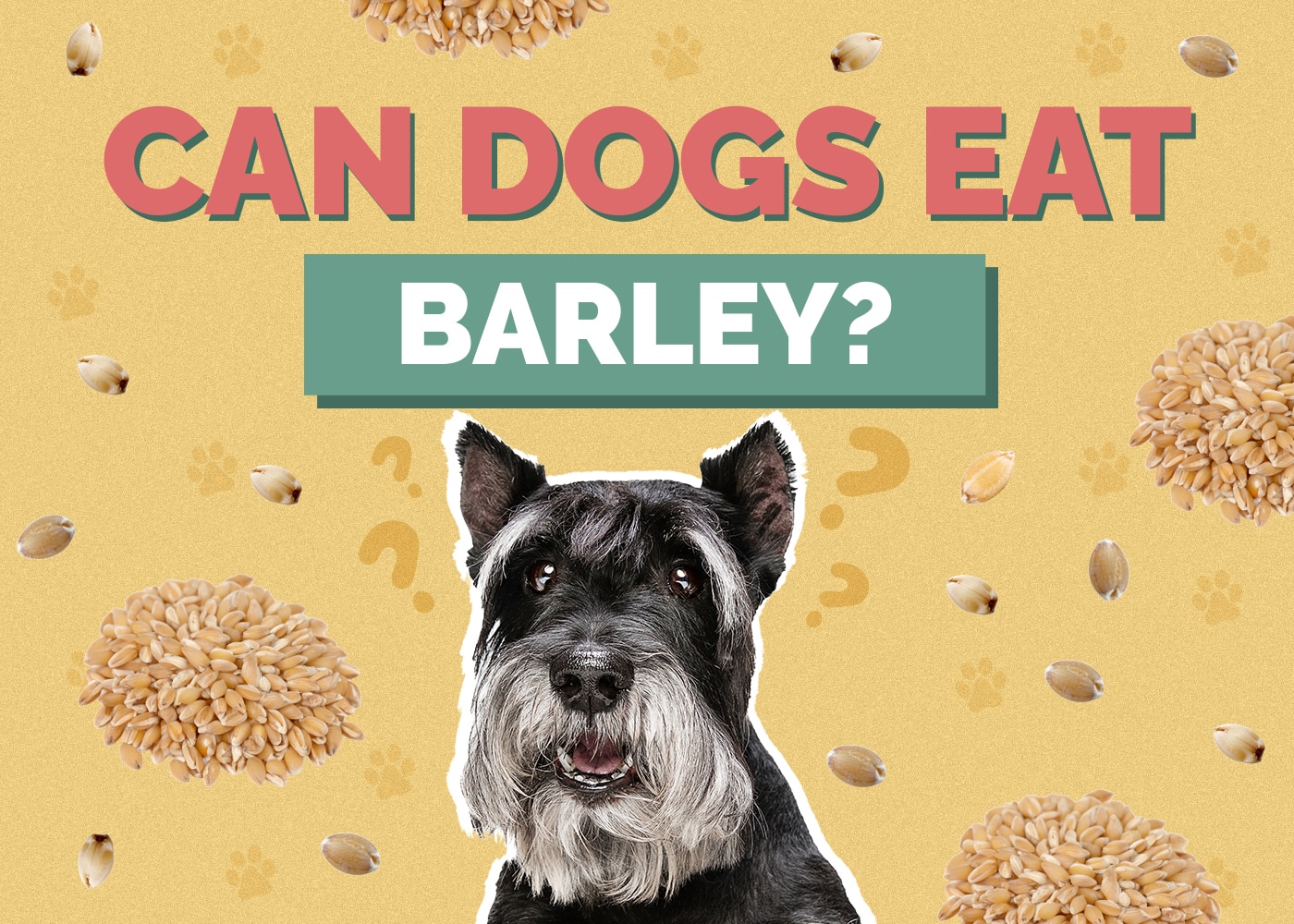Old Deerhound Sheepdog Breed Info: Pictures, Traits, & Facts
Updated on
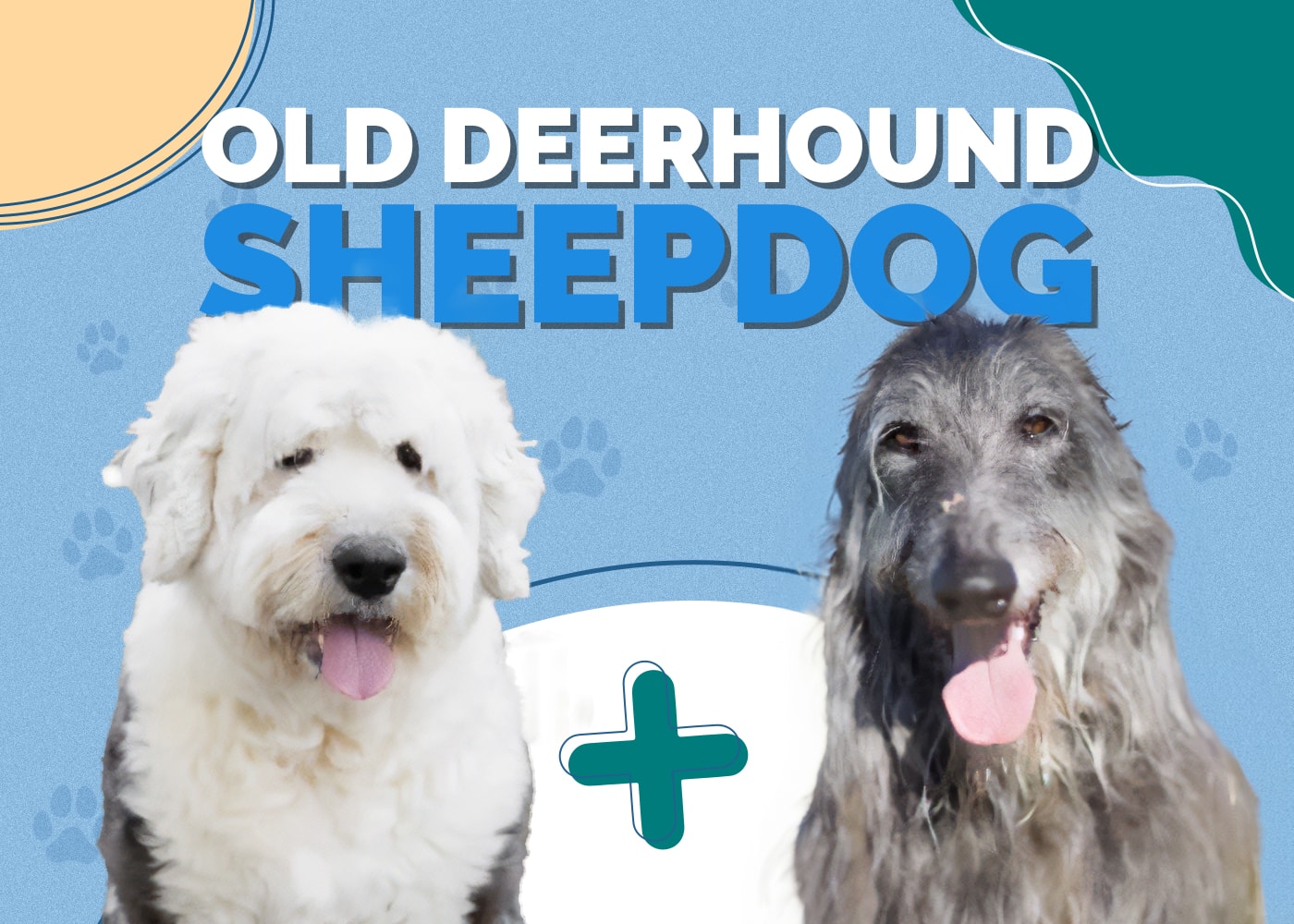
The Old Deerhound Sheepdog is a lanky, scruffy breed with a trainable, easygoing personality perfect for nearly any family out there. They have a distinct wiry coat that comes in a stunning color palette, and the breed boasts a Greyhound-like physique. This unassuming underdog definitely doesn’t get enough love compared to, say, the Lab hybrids out there, but we’re here to change that. Let’s check out some more about this old English hybrid down below.
Breed Overview
| Height: | 21 to 28 inches |
| Weight: | 65 to 90 pounds |
| Lifespan: | 8 to 12 years |
| Colors: | White, black, gray, blue |
| Suitable for: | Moderately active families with or without children, singles, or active seniors |
| Temperament: | Intelligent, affectionate, mellow, watchful |
The Old Deerhound Sheepdog is a mix between the Old English Sheepdog and the Scottish Deerhound, and as hybrids, they can display a spectacular mix of any of those two breeds’ traits. Most commonly, Old Deerhound Sheepdogs take after the Deerhound in build and with the Old English Sheepdog’s wavy, wiry coat. This is a laid back breed that loves playtime but knows when it’s time to chill for a mellow evening.
Old Deerhound Sheepdog Breed Characteristics
Old Deerhound Sheepdog Breed Puppies

As a lesser-known hybrid, you’ll have a hard time finding Old Deerhound Sheepdog puppies because breeders don’t typically deal with crossbreeds like them. You’re better off having luck searching for Scottish Deerhound or Old English Sheepdog enthusiast groups on social media like Facebook and seeing if anyone has any litters available. Alternatively, you can look on Craigslist or other local networking apps.

Temperament & Intelligence of the Old Deerhound Sheepdog 🧠
The Old Deerhound Sheepdog is an amiable breed that gets along with humans and other pets alike, and their long herding history gives them an innate eagerness to please that makes them exceptionally trainable dogs. Even so, they’re more independent than dogs that like being attached to your side, and they’ll gladly explore at their leisure.
Deerhound Sheepdogs are gentle giants that protect their family with an imposing bear-like bark, but they’re not exactly great guard dogs—they’re much too friendly! They do, however, have a great temperament to be a watchdog.
Are These Dogs Good for Families? 👪
Yes! Old Deerhound Sheepdogs make fine family dogs if you know what you’re getting into. They’re much larger than you’d expect, which can be problematic with young children who don’t know how to safely interact with such a large dog. They’re remarkably tolerant of kids as long as you’re there to enforce boundaries and correct problem behaviors, like nipping or jumping on people.
Does This Breed Get Along With Other Pets?
Yes, Old Deerhound Sheepdogs are moderately social dogs provided you socialize them a lot in early puppyhood. They’re not gregarious dogs, however, and are more likely to ignore other dogs and even cats than to interact with them. They’re polite dogs at heart, but some individuals are more social than average.

Things to Know When Owning an Old Deerhound Sheepdog:
Food & Diet Requirements 🦴
This is a large, moderately active breed that needs high-quality dry dog food formulated with the ideal blend of nutrients. We recommend a high-protein diet with no less than 20% protein to fuel their prodigious muscles and a balanced mix of fats, carbs, and vitamins/trace nutrients. Lean meats, veggies, and fruits can be added to further enhance the nutrition they get too, but only in moderate quantities. A good kibble will still supply the majority of your dog’s nutrition.
Three cups of food per day should suffice for a balanced maintenance diet for the average Old Deerhound Sheepdog, but exact portions will depend on your dog’s weight. Smaller dogs that take after the Sheepdog might not need as much food, for instance. Puppies may need more or less food depending on their weight and age, as well as being split into more meals (three to four versus two to three) per day.
Exercise 🐕
Despite their long herding history, the Old Deerhound Sheepdog isn’t excessively hyperactive and, at most, needs about an hour of vigorous exercise per day to stay happy and healthy. They love to run more than anything, but they’re very happy to play ball, tug of war, or any number of outdoor games for a fun afternoon. Unlike more energetic breeds, they tucker out relatively quickly and love to lie down indoors on a cool floor or cozy bed.

Training 🎾
This dog breed is easy to train thanks to centuries of herding, and they’re happy to work with you as long as you present the right treats. Old Deerhound Sheepdogs are confident dogs but also emotional dogs, and it’s crucial that you never use punishments or harsh words to correct bad behavior. It’s just plain mean, and all that happens is you’ll find yourself with a gloomy, mistrustful dog on your hands.
Instead, we strongly urge exclusively using positive reinforcement techniques to build your dog’s confidence and avoid damaging their trust in you as their pet parent. You can get started by giving your dog a treat any time they come when you call them. Their brain makes the mental connection that certain words mean they can perform a command to get a treat, and you can build from there with commands like sit, heel, or stay.
Grooming ✂️
The Old Deerhound Sheepdog tends to have a long, wiry, dense coat that requires routine grooming to stay presentable. Without weekly brushing, their wavy fur has a bad habit of tangling and knotting into dog dreadlocks you do not want to deal with. With both parents having wiry fur, the only question is whether your dog has more manageable Deerhound-like fur, the more unruly Sheepdog fur, or a mix! Expect moderate shedding throughout the year and heavy shedding in the spring and fall shedding seasons.
Health and Conditions ❤️
As a larger breed, the Old Deerhound Sheepdog isn’t that long-lived and averages an 8-to-10-year lifespan. During that time, they’re a relatively healthy breed but prone to some chronic minor health issues and a couple of more major ones. Let’s take a better look at some health issues you may expect to encounter with the Old Deerhound Sheepdog.
- Dysplasia: A painful arthritic joint condition common in large dogs like the Deerhound and Sheepdog.
- Cataracts: Deerhounds are particularly prone to developing milky cataracts that obscure vision and eventually lead to vision loss.
- Deafness: Old English Sheepdogs and their offspring are more likely than average to develop deafness in one or both ears, especially later in life.
- Gastric torsion: Also called bloat, this potentially fatal medical emergency happens when your dog overeats and their stomach fills with gas quickly before twisting. It’s very common in large, deep-chested breeds like this one.
- Dilated cardiomyopathy: AKA DCM, this common but very serious heart disease is even more common in large breeds like the Deerhound.
Male vs. Female
As with most dogs, male Old Deerhound Sheepdogs trend a little larger than females, and there are few other discernible differences of note. However, as a crossbreed, this isn’t a hard and fast rule. Even within the same litter of puppies, you can see larger females that take after the Deerhound and smaller males that look more like a Sheepdog. It’s more important to get to know the dogs and their unique individual personalities than to choose by gender anyway.
3 Little-Known Facts About the Old Deerhound Sheepdog
1. The Scottish Deerhound Was Once Reserved for Nobility
The Scottish Deerhound hails from even before the Scottish people, and their bloodline has persisted with some variations for countless centuries. At one point in the 16th century, Scottish Deerhounds were so prized by Scottish nobility that only nobles were allowed to own them. Talk about exclusive!
2. Old English Sheepdogs Were Once Bobtail Cattle Drivers
Other than sheep, this fluffy working breed was developed to drive cattle, and they were identified as working dogs with a docked tail. As such, they were called Bobtails for a long time.
3. Scottish Deerhounds Are Often Confused With Irish Wolfhounds
Irish Wolfhounds and Scottish Deerhounds are sometimes confused with each other, despite their distinct histories. However, the Wolfhound is generally larger and has less scraggly fur compared to the Deerhound. In fact, the Wolfhound is considered one of the largest breeds of all!

Final Thoughts
The Old Deerhound Sheepdog is a perfect marriage of the fluffy, fun-loving Sheepdog and the more independent Deerhound. They love to run and play and are easily trained, and they’re very loving, gentle dogs at heart. We recommend them for nearly any family, as long as you can supervise them with young kids.
Featured Image Credit: Left – benwongp, Shutterstock | Right – Antonia Gros, Shutterstock




